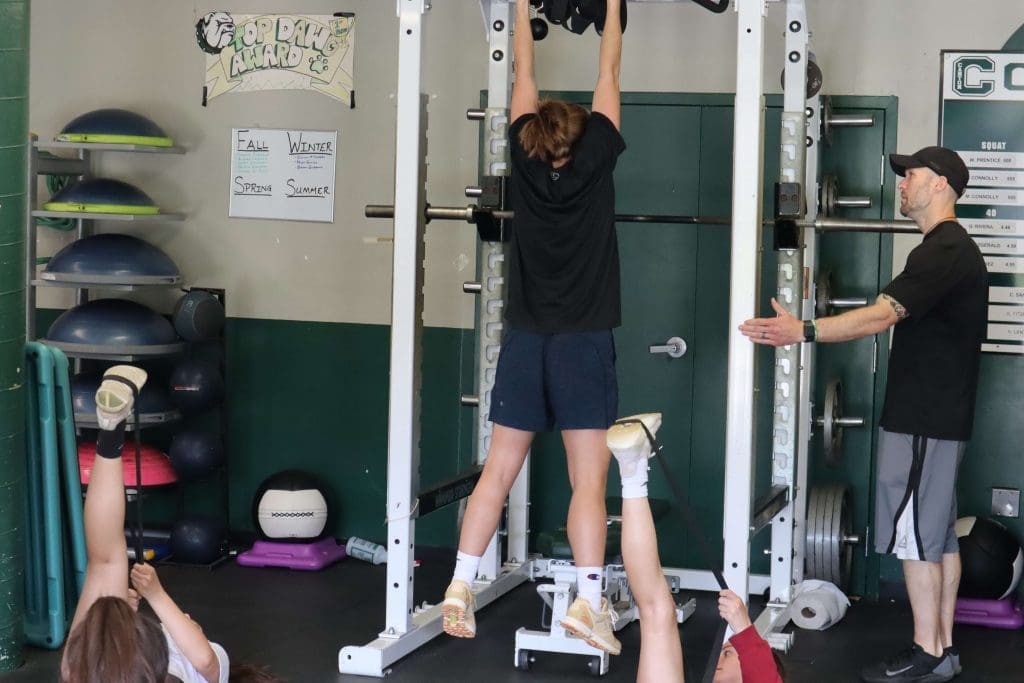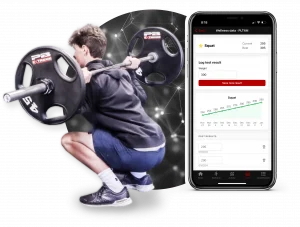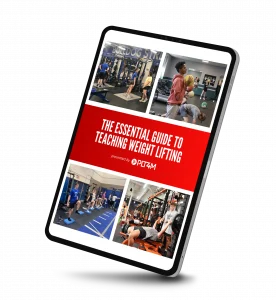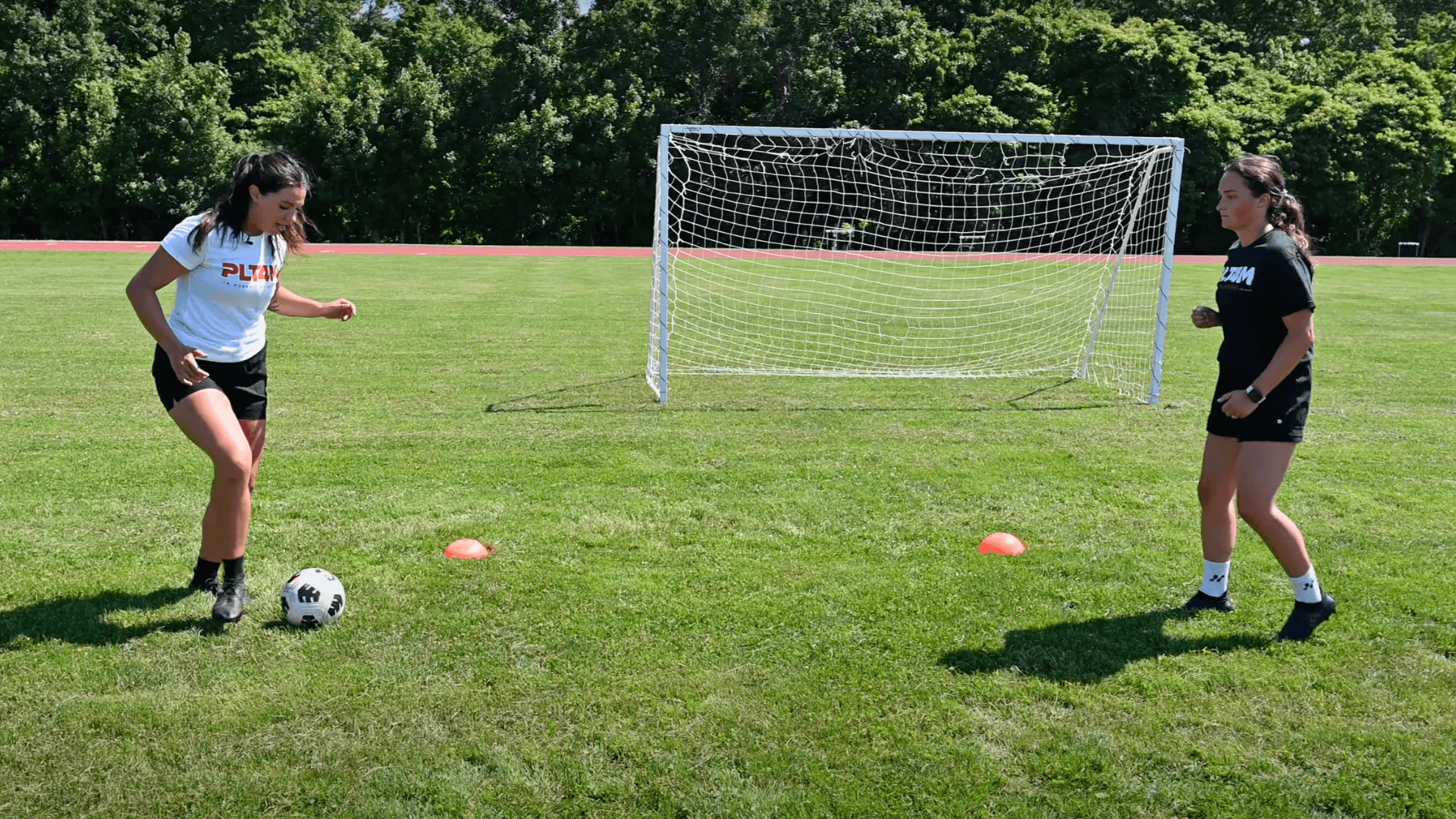Walking up to the pull-up bar and hitting perfect pull ups might seem like a daunting task. But with the right pull up modification, any individual can begin to master this challenging exercise. We explore different pull up modification options to support every individual and their relative strength and ability.
The Pull – Foundational Human Movement
For some reason, “Pulling”, as a fitness movement, is far less talked about than squats, presses, or a myriad of other bodyweight exercises.
However, the importance of pulling your own body to an object, or an object to your body, cannot be overstated.
In fact, pulling is a physiological necessity in order to optimize results and avoid injury. We actually know that strong and stable shoulders ultimately depend on our pulling more than our pushing – so long as we are pulling properly, and doing so in multiple movement planes.
Thus, the act of “pulling” with the upper body is widely considered to be one of the foundational human movement patterns.

The Need For Pull Up Modifications
So why is pulling and pull up modifications so infrequently discussed?
Well, this is likely because bodyweight pulling movements are one of the trickiest components to incorporate in a successful strength training or fitness program.
Frankly, bodyweight pulling, like the traditional pull up, is a daunting movement for MOST people, as it is extremely difficult to perform even 1 perfect rep without first practicing and developing the requisite strength and body control. When starting out, people will often avoid the movement altogether if given the chance.
Here at PLT4M, we firmly believe in the importance of bodyweight pulling, right from the get-go! Thus, we strive to offer a complete array of pull up modification options for the movement.
Pull Up Modification Options
Because the traditional pull-up exercise is a challenging movement, we opt to scale and modify as necessary. Through modified pull up options, we can still develop our upper body strength and pulling capacity.
At PLT4M, we typically work individuals through the following progression, focusing on form and technique throughout:
Step 1: Inverted Row
Step 2: Band Assisted Pull Ups
Strict Pull Ups
Check out a full breakdown of the pull up modification options below. From there, we will dive into each step and option in more detail.
Free E-Book: Essential Guide to Teaching Weight Training
Our five essential steps to initiate or improve your weight training program. Filled with extra resources, videos, and real-life examples, don’t miss this free resource!
1) The Inverted Row
The inverted row is the first step towards full pull ups. When performing the inverted row, individuals should strive for the following points of performance.
Point 1: Hand Placement
Begin by placing your hands, palms down and fingers forward, around whatever instrument you have available, just outside of shoulder width.
Point 2: Elbow Path
Shoulders should attempt to remain externally rotated (or as much as possible if using a static bar), aka the upper arms should create and “Arrow”, not a “T” when looked at from behind.
Point 3: Stable Midline
Core should remain engaged through the pull – like our plank, maintaining a neutral spine. Hips should not sag, or move independent of the torso – think the worm style pulling.
Point 4: Full ROM
The pull should finish by bringing the chest all the way to the hands.
At the bottom, elbows should be relaxed open to full extension, without hips sagging.
Important Consideration For Pull Up Modifications
Just as with our push ups, we want to scale the bodyweight pull to best challenge ourselves without ever sacrificing points of performance.
To do so, we will change the difficulty of our pulling reps by adjusting our body position relative to the floor. The more vertical (closer to standing) we are, the easier it will be. Find a starting position that suits your needs and work to make it more challenging over time.
2) Banded Pull Ups
While individuals might develop great pulling mechanics via an inverted row, they still might not be ready for bodyweight pull ups. Therefore, our first, and perhaps most effective strategy to vertical pulling is through a banded pull up.
Band assisted pull ups are a great option for anyone working towards the full movement. This will allow you to complete the full range of motion on each rep, while decreasing the demand on your upper body. Additionally, there are varying levels of resistance bands themselves.
Thus you can begin with lots of assistance (big, thick bands), and progress to decreasingly less assistance (smaller, thinner bands) over time.
The key is simply to find a band that offers enough assistance that allows for perfect reps each and every time.
And because this is our first go at vertical pulling, we must understand the relevant points of focus during execution of a vertical bodyweight pull. When it comes to the traditional strict pull up itself, there are some similar points of performance to keep in mind on each and every rep.
Point 1: Hand Placement
Grasp the bar using an overhand grip (palms facing away from body), with the arms fully extended.
Point 2: Elbow Path & ROM
Activate the shoulders and lats, then pull the body until the chin clears the top of the bar with the elbows tracking down, then lower to a position with the arms fully extended. This is 1 rep.
Point 3: Stable Midline
The pull-ups should be done in a smooth motion. Jerky motion, swinging the body, and kicking or bending the legs is not permitted.
Other Pull Up Modification Options
If things like TRXs, Rings, and Bands aren’t available, there are alternative exercises and opportunities to approach pull up modifications.
Some of the best alternatives are:
1. Negative Pull-Ups
2. Partner Assisted Pulls
3. Seated Bar Pulls
4. Assisted Pull Machines
5. Lat Pulldowns
Individuals might choose these exercise options because of logistics, space, or just an alternative way of building strength. Find the right pull modification that suits your needs and interests!

Ready To Raise The Bar?
Our platform is the #1 choice for coaches and teachers looking to take their program to the next level. Learn how you can save time, improve results, and increase student engagement.
Key Takeaways On Pull Modification Options
In any general fitness or athletic performance program, pulling is a necessary and important component for success. And whether you are eager to hit a perfect pull up or wary of pulling at all, it is important to find the right pull up modification.
First and foremost, take time at whatever starting position of the pull up modification journey you are on. It will take time and consistency to move from inverted rows, to banded assisted pull ups, to full blown pull ups.
Next, remember that fitness is anything but linear. If at any point form or technique falters, go back to a pull modification that allows you maintain great movement mechanics.
Finally, don’t avoid it! Within the full library of different fitness options there is some type of pulling that round out your strength training program.










